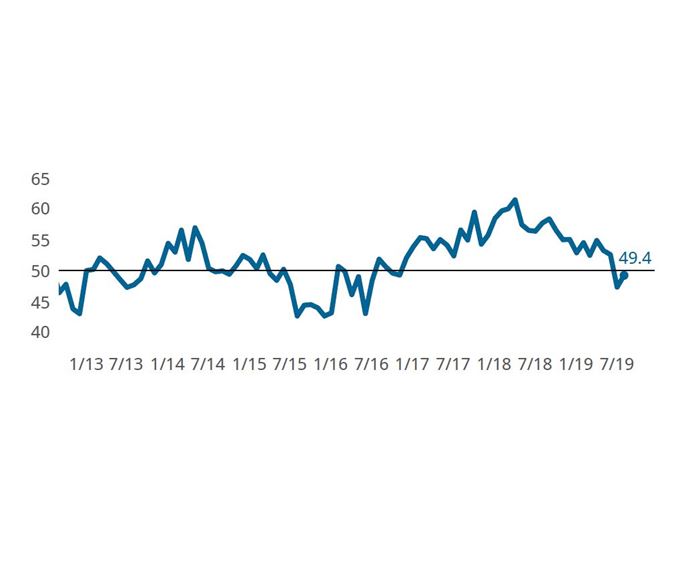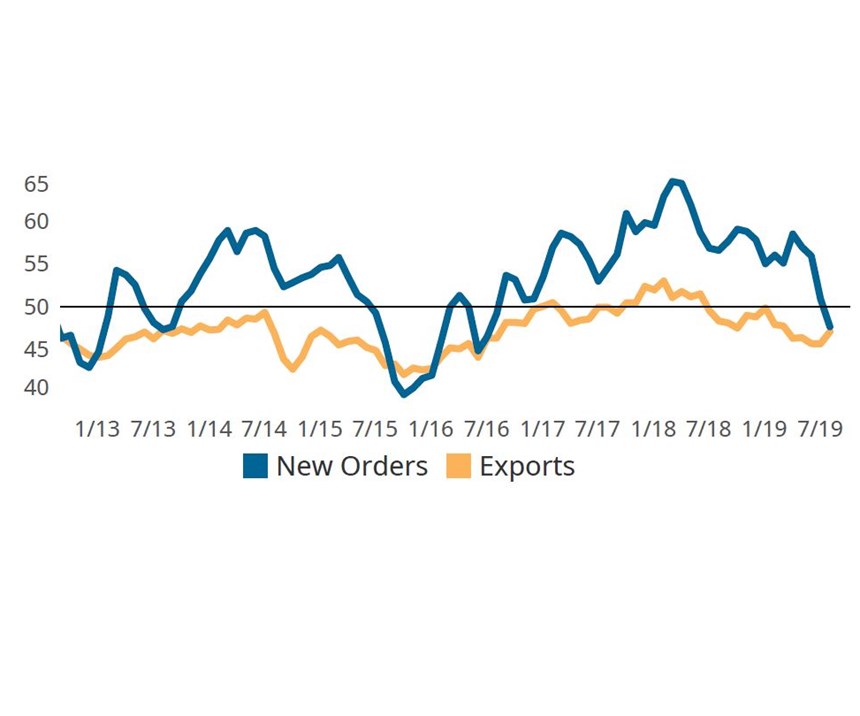Composites Index contraction slowed in August
The Index indicated expansionary readings in production, supplier deliveries and exports, but was pulled lower by employment, new orders and backlogs.
The Composites Index registered 49.4 in August, which indicates slowing contraction over the prior month. Index readings above 50 indicate expanding activity, while values below 50 indicate contracting activity. The further away a reading is from 50, the greater the change in activity. Gardner Intelligence’s review of the underlying data revealed a surprise expansionary reading in export business activity in August. The Index — calculated as an average of its components — was raised higher by expansionary readings in production, supplier deliveries and exports, and was pulled lower by employment, new orders and backlogs.
The August Index indicated an unusually large eight-point spread between production and new orders. Since records began in 2011, the spread between new orders and production has often been very small, as fabricators often quickly adjust production to new orders. The combination of increased production despite weak new orders activity was apparent in August’s backlog data, which reported another month of contraction.
Lastly, it should be noted that August’s combination of an expansion in exports coupled with a quickening contraction in total new orders is rare, as it suggests that domestic demand for composite goods contracted during the month. Since mid-2018, the Composites Index has regularly reported the opposite, that contracting exports have typically been offset by expanding domestic demand.
More information about the Composites Fabricating Index can be found at http://www.gardnerintelligence.com/
Related Content
-
Airbus presents unmanned Wingman concept
Fighter jet model unveiled at ILA Berlin, made from an iron structure and composite outer skin, will deliver more tactical options, supporting future combat missions.
-
From the CW Archives: Airbus A400M cargo door
The inaugural CW From the Archives revisits Sara Black’s 2007 story on out-of-autoclave infusion used to fabricate the massive composite upper cargo door for the Airbus A400M military airlifter.
-
Large-format 3D printing enables toolless, rapid production for AUVs
Dive Technologies started by 3D printing prototypes of its composite autonomous underwater vehicles, but AM became the solution for customizable, toolless production.

.jpg;width=70;height=70;mode=crop)













